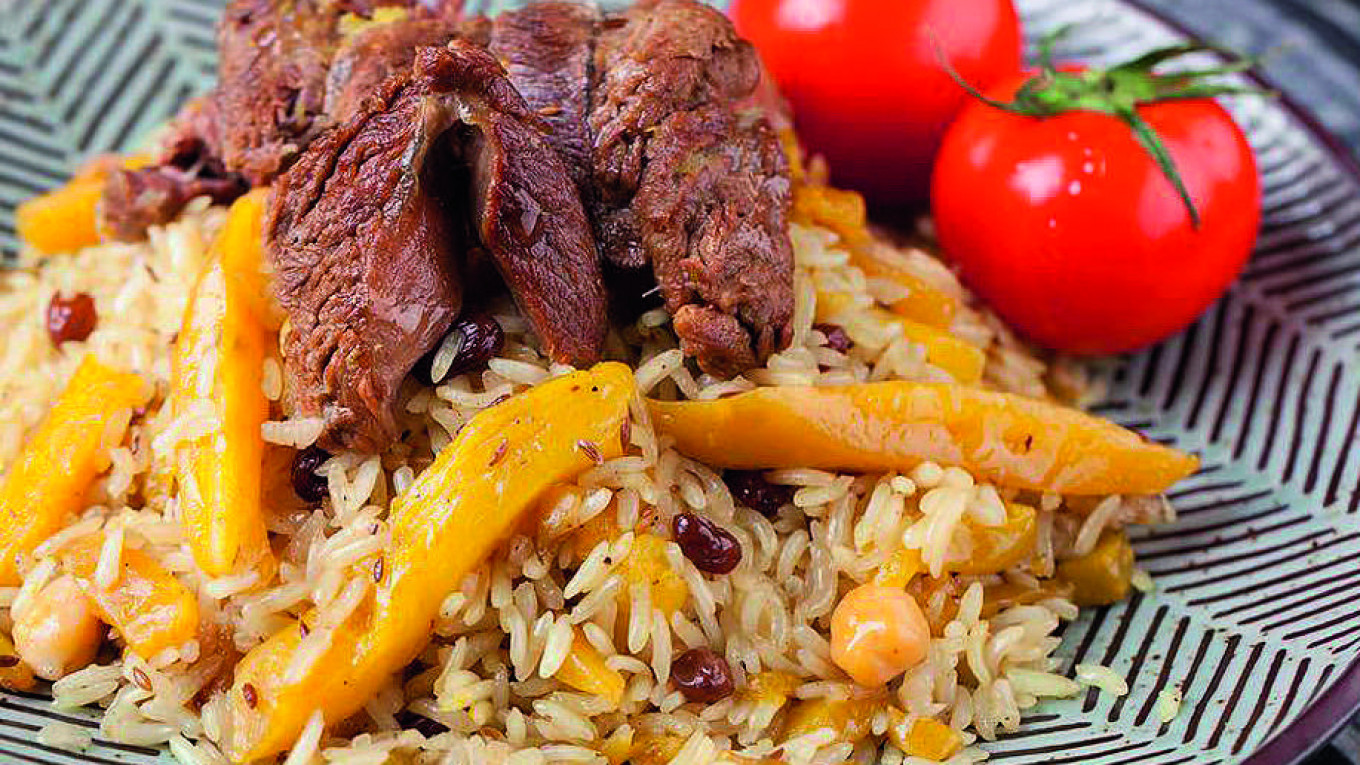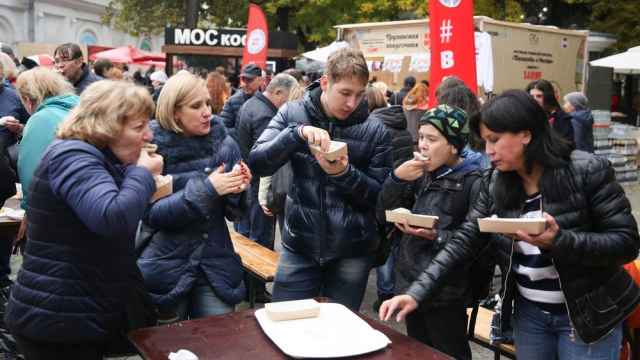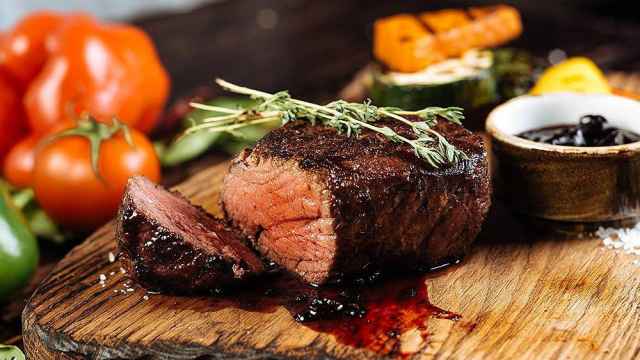Located in a two-story mansion right next to an Armenian church in the Maryina Roshcha neighborhood, Oxus presents an alternative take on Central Asian cuisine, distinctly different from ubiquitous chains like Chaikhona #1.
The first floor has a more ethnic feel. There is a circular tapchan, a traditional Central Asian bench for drinking tea, right in the center of the room, complete with plenty of pillows. The second floor, on the other hand, features potted olive trees and several private rooms. On the first floor you are allowed to smoke shisha, while the second floor is strictly non-smoking.
Oxus is the historical Latin name for Amu Darya, the major Asian river that crosses Tajikistan, Afghanistan, Turkmenistan and Uzbekistan. Oxus owners claim that they try to source as much produce as possible from these countries. Oxus’s chef is Bakhodir Nurmukhamedov from Uzbekistan, who is known for his work at some of the best Tashkent restaurants, including L’Art de la Cuisine and Golubiye Kupola (Blue Domes). Thanks to him, the focus at Oxus is really on Uzbek cuisine.
First, try one of the cold starters, for example, naryn — thin slices of boiled horse meat and noodles served with a piece of horse sausage — or lamb with archa, Uzbek juniper, cooked in a traditional tandyr clay oven (470 rubles).
The hot starters include the more familiar samsa, a version of samosa, a small triangular pastry with lamb (160 rubles each) or mini-chebureki, deep-fried pastries with various fillings (360 rubles for three). You can also get shurpa here, a clear soup with lamb and vegetables (520 rubles).
For your main dish, go for the Samarkand plov.
The word means pilaf and consists of rice simmered
in meat stock with herbs and spices in a
large cooking pot (690 rubles). Oxus’s version
includes raisins, chickpeas and yellow carrot. Lagman
is another typical Central Asian dish of handpulled
noodles, served either with or without
broth. At Oxus you get the Uyghur version served
with lamb and sweet peppers (620 rubles).
If you are feeling celebratory, there’s a list of
special cocktails to round it all off, including “Persimmon,”
a gin drink made with fruit and served in
a hollowed out, frozen persimmon.
A Message from The Moscow Times:
Dear readers,
We are facing unprecedented challenges. Russia's Prosecutor General's Office has designated The Moscow Times as an "undesirable" organization, criminalizing our work and putting our staff at risk of prosecution. This follows our earlier unjust labeling as a "foreign agent."
These actions are direct attempts to silence independent journalism in Russia. The authorities claim our work "discredits the decisions of the Russian leadership." We see things differently: we strive to provide accurate, unbiased reporting on Russia.
We, the journalists of The Moscow Times, refuse to be silenced. But to continue our work, we need your help.
Your support, no matter how small, makes a world of difference. If you can, please support us monthly starting from just $2. It's quick to set up, and every contribution makes a significant impact.
By supporting The Moscow Times, you're defending open, independent journalism in the face of repression. Thank you for standing with us.
Remind me later.






